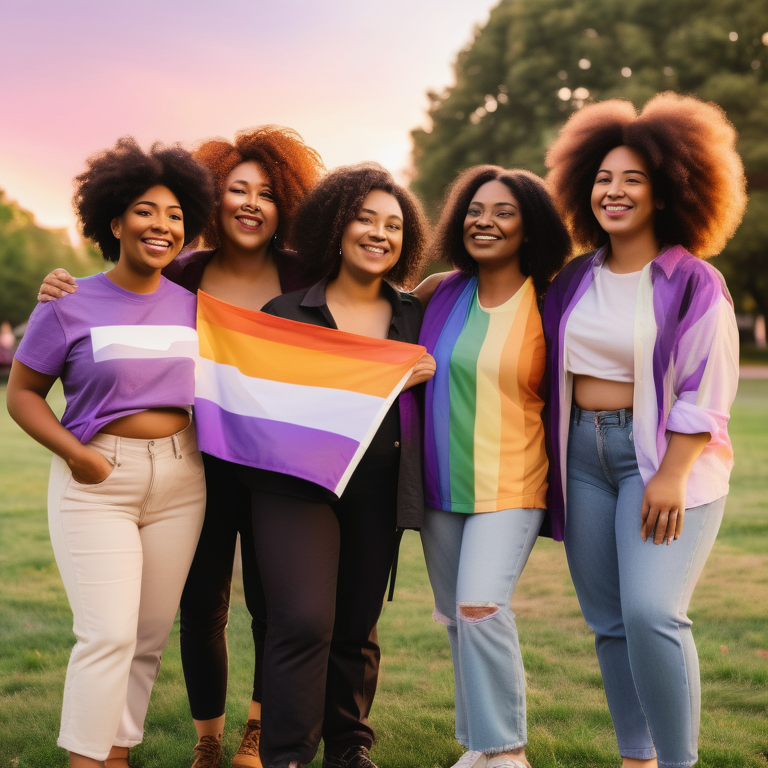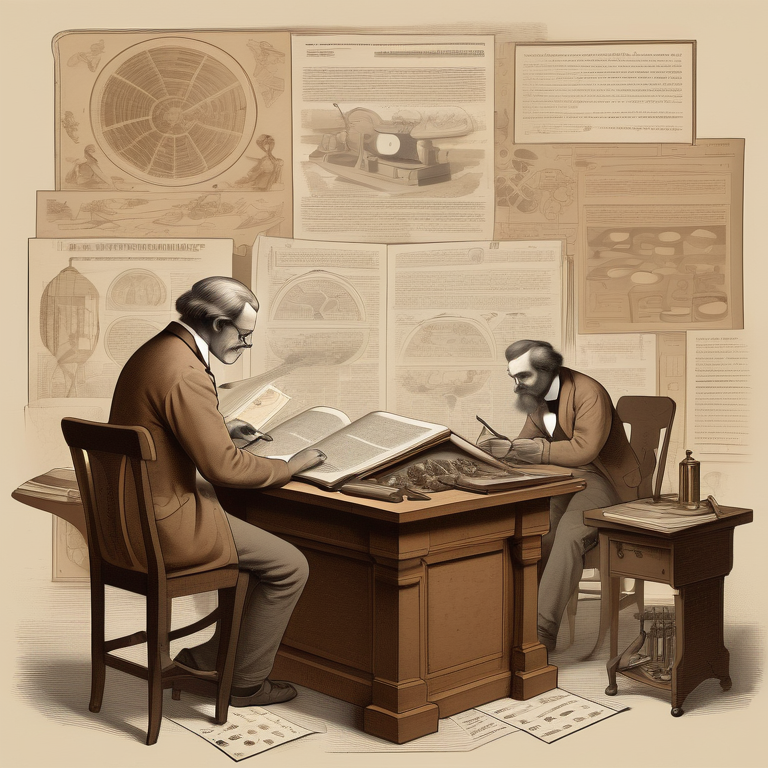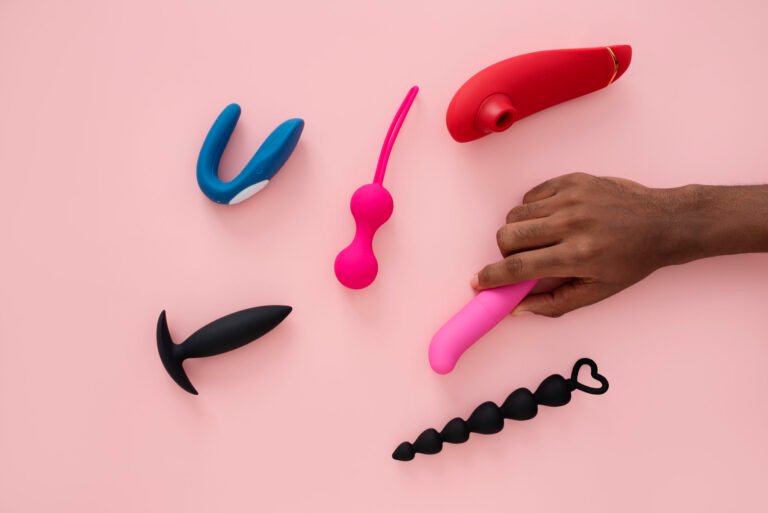Celebrating Asexual Women in the LGBTQ+ Community

Key Highlights
- Asexual women are an important part of the LGBTQ+ community, and their experiences and identities deserve recognition and celebration.
- Asexuality is a sexual orientation characterized by a lack of sexual attraction or interest in sexual activity.
- Asexual women navigate their romantic relationships differently than those who experience sexual attraction, and it is important to understand and respect their unique experiences.
- Asexual women face challenges in terms of visibility and acceptance within the LGBTQ+ community, and it is crucial create inclusive spaces for them.
- Representation of asexual women in media and literature is limited, but there are growing efforts to increase visibility and provide more accurate portrayals.
- Intersectionality plays an important role in understanding asexual women’s experiences, as their identities intersect with race, disability, and other aspects of their lives.
- Support systems and community building are crucial for asexual women to find understanding and acceptance, both online and in local support groups and events.
- Overcoming prejudice and discrimination is an ongoing battle for asexual women, and advocacy for legal protections and education are necessary for progress.
Introduction
Asexual women are an important and often overlooked part of the LGBTQ+ community in the United States. While sexual orientation and gender identity are widely discussed, asexuality is often misunderstood or dismissed. It is crucial to recognize and celebrate the experiences and identities of asexual women, as they contribute to the diversity and richness of the LGBTQ+ community in the United States. According to a recent study by the Williams Institute, an estimated 1.7% of sexual minority adults in the United States identify as asexual, highlighting the importance of acknowledging and supporting this community.
Asexuality is a sexual orientation characterized by a lack of sexual attraction or interest in sexual activity. Asexual women, just like any other individuals, have different romantic attractions and desires. Some may experience romantic attraction and seek romantic relationships, while others may not. It is important to understand and respect the unique experiences and desires of asexual women, including any potential sexual dysfunction, when navigating relationships and understanding their place within the LGBTQ+ community, especially for young people who are still finding their place in the world. The asexuality movement is still young, and most “out” aces are young people who have not yet reached positions of power. As a result, their voices may not be as loud as others in the community.
Asexual women face challenges within the LGBTQ+ community, particularly in terms of visibility and acceptance. They may feel invisible or misunderstood, and it is crucial to create inclusive spaces where their experiences are acknowledged and respected. Representation of asexual women in media and literature is also limited, but efforts are being made to increase visibility and provide more accurate portrayals.
Intersectionality plays a significant role in understanding asexual women’s experiences. Their identities intersect with other aspects of their lives, such as race and disability, which can further impact their experiences within the LGBTQ+ community. It is important to recognize and address these intersections to create a more inclusive and understanding community for asexual women.
Support systems and community building are vital for asexual women to find understanding and acceptance. Online communities and local support groups provide safe spaces for asexual women to connect with others who share similar experiences and challenges. These communities offer support, validation, and a sense of belonging, which are essential for their well-being and mental health.
However, asexual women also face prejudice and discrimination. Advocacy for legal protections, education, and awareness are necessary to overcome these barriers and promote understanding and acceptance for asexual women in society. By celebrating asexual women’s identities and experiences, we can contribute to a more inclusive and diverse LGBTQ+ community.
Understanding Asexuality Among Women
Asexuality is a sexual orientation that is characterized by a lack of sexual attraction or interest in sexual activity. Asexual women, like any other individuals, have different romantic attractions and desires. Some may experience romantic attraction and seek romantic relationships, while others may not. It is important to understand that asexual women may not experience sexual attraction but can still experience romantic attraction. Their lack of sexual attraction does not diminish their capacity for love and emotional connections. It is essential to respect and validate their experiences and desires when discussing asexuality among women.
The Spectrum of Asexuality
Asexuality is a broad spectrum that encompasses various identities and experiences. It is an umbrella term that includes different sub-identities within the asexual community, including asexual people. One such model is the split attraction model, which recognizes that sexual orientation and romantic attraction can be separate and distinct. For example, an asexual woman may experience romantic attraction but not sexual attraction. The split attraction model emphasizes that asexual individuals can still form meaningful and fulfilling romantic relationships, even if they do not experience sexual attraction. It is important to understand and respect the diversity within the asexual community and recognize that asexuality is not a one-size-fits-all experience, and for too long such experiences have not been acknowledged or represented in mainstream discussions of sexuality and biological sex.
Misconceptions and Myths
There are several misconceptions and myths surrounding asexuality, particularly among women. One common myth is that asexual individuals are simply celibate or have a low sex drive. However, asexuality is not defined by the absence of sexual activity or desire. Asexual women can engage in sexual activity or experience a sex drive for various reasons, such as physical pleasure or the desire to please their romantic partners. Another myth is that asexual individuals are “broken” or need to be “fixed.” Asexuality is a valid sexual orientation, and it is not a disorder or something that needs to be changed. In fact, classifying asexuality as a medical issue or sexual dysfunction is a harmful and dehumanizing misconception. It is important to debunk these myths and educate others about the diversity and validity of asexuality among women.
Asexual Women’s Experiences in the LGBTQ+ Community
Asexual women’s experiences within the LGBTQ+ community can vary, but they often face unique challenges and barriers to visibility and acceptance. Asexuality is still relatively misunderstood and not widely recognized within society, including the LGBTQ+ community. As a result, asexual women may feel invisible or invalidated within LGBTQ+ spaces, despite the fact that most LGBT people, including LGBT people, have been pretty cool with their asexuality. They may struggle to find representation and understanding among their peers, including transgender people. It is important to create inclusive spaces within the LGBTQ+ community that recognize and celebrate the experiences of asexual women, as well as other marginalized groups within the community. By increasing visibility and fostering understanding, we can create a more inclusive and supportive community for all LGBTQ+ individuals, including asexual women and transgender people. Additionally, asexual women may also face discrimination and invalidation within the LGBTQ+ community, as seen in the example of the eye rolls and disbelief towards the ace pride flag at Pride parades. It is crucial to recognize and celebrate the diverse experiences of asexual women within the LGBTQ+ community, and the pride flag is just one symbol of that diversity.
Challenges of Visibility and Acceptance
Visibility and acceptance are crucial issues for asexual women within the LGBTQ+ community. For the first time this Pride, asexual women stand loud and proud with their fellow LGBTQIA+ community members because they belong there. Asexual individuals face challenges in being recognized and understood due to the lack of awareness and visibility surrounding asexuality, as well as the added stigma and discrimination they may face due to their sexual orientation. This can be particularly challenging within the queer community, where sexual orientation is often centered around sexual attraction. Asexual women may find it difficult to be fully embraced and validated within this community, leading to a sense of isolation and invisibility. It is important for the queer community to actively work towards greater inclusion and understanding of asexual identities, and to address and combat the harmful attitudes and beliefs that contribute to the erasure of asexual individuals. By creating safe and accepting spaces, we can foster a sense of belonging for asexual women and ensure that their experiences, including any experiences of emotional and sexual abuse, are valued and celebrated.
Navigating Relationships as an Asexual Woman
Navigating romantic relationships can be a unique experience for asexual women. While they may not experience sexual attraction, they can still form deep and meaningful connections with others. Asexual women who are in romantic relationships may need to communicate their boundaries and desires openly with their partners, especially when both partners are ace people. Each relationship will be different, and it is essential for both partners to understand and respect each other’s needs. Asexual women may choose to engage in sexual activity for various reasons, such as pleasing their partner or exploring their own physical pleasure. However, it is important to remember that engaging in sexual activity is not a requirement for a fulfilling romantic relationship. Each individual’s desires and boundaries, including the option of raising a child with their best friend, should be respected and prioritized in any relationship.
The Importance of Inclusion and Representation
Inclusion and representation are vital for the well-being and visibility of asexual women within the LGBTQ+ community. It is crucial to create spaces that recognize and celebrate the experiences of asexual individuals. Representation in media and literature plays a significant role in shaping societal understanding and acceptance. By featuring asexual women in diverse and accurate portrayals, we can challenge misconceptions and foster empathy and understanding. Inclusion within the ace community is also crucial, as it provides support, validation, and a sense of belonging for asexual women. By prioritizing inclusion and representation, we can contribute to a more inclusive and diverse LGBTQ+ community.
Asexual Representation in Media and Literature
Representation of asexual women in media and literature is still limited but growing. Asexual characters and storylines are beginning to appear in various forms of media, including television shows, books, and films. Although representation is still relatively scarce, these portrayals contribute to increased visibility and understanding of asexuality. It is important for media and literature to accurately and respectfully depict asexual women’s experiences, challenges, and triumphs. By providing diverse and authentic representations, we can help dispel misconceptions and foster greater acceptance and empathy within society. Asexual women deserve to see themselves reflected in the media and literature they consume, and increased representation can contribute to a more inclusive and understanding society.
The Role of Asexual Activism
Asexual activism plays a crucial role in advocating for the rights and visibility of asexual individuals, including asexual women. Asexual activists work to raise awareness, challenge stereotypes and misconceptions, and foster inclusion within the LGBTQ+ community and society as a whole. They advocate for legal protections, education, and understanding to advance the rights and well-being of asexual individuals. Asexual activists also contribute to community-building and provide support for asexual women and others within the ace community. By amplifying their voices and advocating for change, asexual activists are instrumental in creating a more inclusive and accepting society for asexual women and other sexual minorities. Their work is essential in advancing LGBTQ+ rights and promoting equality for all.
Intersectionality and Asexual Women
Intersectionality is a crucial concept when understanding the experiences of asexual women. Asexual women’s identities intersect with other aspects of their lives, such as race and disability, shaping their experiences within the LGBTQ+ community. It is important to recognize and address the unique challenges and discrimination that asexual women of different races and abilities may face. Intersectionality allows us to understand and challenge the interconnected systems of oppression and discrimination that impact asexual women’s lives. By centering intersectionality, we can work towards a more inclusive and equitable community for all asexual women, regardless of their race, disability, or other intersecting identities.
Race, Disability, and Asexuality
The intersection of race, disability, and asexuality influences the experiences of asexual women. Asexual women of different racial backgrounds, particularly people of color, may face unique challenges within the LGBTQ+ community. They may encounter cultural and societal expectations that further complicate their experiences and acceptance. Similarly, asexual women with disabilities may navigate additional barriers and discrimination in terms of their sexual orientation and relationships. It is crucial to recognize and address these intersecting identities, including the experiences of people of color and white people, to create a more inclusive and understanding community for asexual women of all races and abilities. By centering the experiences of asexual women of all races and abilities, we can work towards a more equitable and inclusive society for all.
Feminism and Asexuality
Feminism plays an important role in understanding and supporting asexual women. Asexuality challenges societal norms and expectations regarding sexuality and relationships. Asexual women may face pressure to conform to traditional gender roles and expectations, including societal assumptions that women should be sexually available or desire sexual intimacy. Feminism provides a framework for challenging these norms and advocating for the autonomy and agency of asexual women. It recognizes that women should have the right to define and express their own desires and experiences, including those related to sexuality. By embracing a feminist perspective, we can work towards a more inclusive and understanding society that respects and celebrates the diverse experiences and identities of asexual women.
Support Systems and Community Building
Support systems and community building are crucial for asexual women to find understanding, validation, and a sense of belonging. Online communities, such as forums and social networking platforms, provide safe spaces for asexual individuals to connect, share experiences, and seek support. These spaces allow asexual women to find solace and understanding among others who share similar experiences and challenges. Local support groups and events also play a vital role in creating in-person connections and fostering a sense of community. By creating and nurturing these support systems and safe spaces, we can provide a sense of belonging and support for asexual women, helping them navigate their identities and experiences with greater ease.
Online Communities and Safe Spaces
Online communities and social networking platforms have played a significant role in connecting asexual individuals and providing safe spaces for them to express themselves. These online communities, such as the Asexual Visibility and Education Network founded by David Jay in 2001 and archived on the wayback machine, serve as valuable resources for asexual women to connect with others who share their experiences, challenges, and triumphs. They offer a platform for discussion, support, and validation, helping asexual women to feel less alone and more understood in broader society. These communities also provide educational resources and information about asexuality, helping to dispel myths and misconceptions. By fostering online communities and safe spaces, we can create a sense of belonging and community for asexual women, allowing them to find support and connection in their journey of self-discovery and acceptance within the broader society.
Local Support Groups and Events
Local support groups and events play a vital role in fostering connections and community among asexual women. These in-person spaces provide opportunities for asexual individuals to meet and engage with others who share similar experiences and challenges. Local support groups offer a safe and supportive environment for asexual women to share their stories, seek advice, and build friendships. Events such as workshops, conferences, and social gatherings provide opportunities for education, empowerment, and celebration. By organizing and participating in local support groups and events, asexual women can find a sense of community, understanding, and validation. These spaces facilitate personal growth, empowerment, and the development of lifelong connections within the asexual community.
Overcoming Prejudice and Discrimination
Prejudice and discrimination are unfortunate realities that asexual women may face. They may encounter misunderstanding, invalidation, and marginalization within society, including the LGBTQ+ community. Overcoming prejudice and discrimination requires education, awareness, and advocacy. Asexual women’s experiences and rights must be acknowledged and protected, including protections against sexual harassment and violence. This includes advocating for legal protections against discrimination and promoting education and awareness to challenge societal misconceptions and stereotypes, particularly the harmful gender binary. By working together, we can create a society that respects and celebrates the diverse identities and experiences of asexual women, including those who identify outside of the gender binary, ensuring that they are valued and embraced within the broader community.
Advocating for Legal Protections
Advocating for legal protections, as seen in the historical and contemporary struggles of LGBTQ communities through the gay rights movement, is crucial for asexual women to overcome discrimination and ensure their rights are respected. Asexual individuals, including women, face challenges in terms of societal acceptance and understanding. It is important to advocate for legal protections that prohibit discrimination based on sexual orientation and gender identity, including civil rights and lgbt rights. These protections can help ensure equality and fairness in areas such as employment, housing, and public accommodations. By advocating for legal protections, we can create a society that values and respects the rights of all individuals, including asexual women. It is important to recognize that everyone deserves to live free from discrimination and to have their identities and experiences acknowledged and protected under the law. Joining the nation’s oldest and largest legal advocacy group that fights for the civil rights of LGBTQIA+ individuals and those who live with HIV is one way to actively advocate for and protect the rights of asexual women in the LGBTQ+ community.
Education and Awareness Efforts
Education and awareness play a crucial role in challenging misconceptions and fostering acceptance of asexual women within society. It is important to educate others about asexuality and dispel myths and misconceptions. This includes promoting accurate information about asexuality, sharing personal stories and experiences, and providing resources for further learning. By raising awareness, we can foster empathy, understanding, and acceptance for asexual women. Education and awareness efforts should be ongoing and inclusive, reaching individuals of all backgrounds and ages. By investing in education and awareness, we can promote a more inclusive and understanding society, where asexual women are valued and celebrated for their diverse experiences and identities.
Conclusion
In celebrating asexual women in the LGBTQ+ community, it’s essential to recognize their diverse experiences and challenges. By understanding the spectrum of asexuality and debunking misconceptions, we pave the way for greater acceptance and visibility. Asexual women navigate relationships uniquely, highlighting the importance of inclusion and representation in media and activism. Intersectionality plays a crucial role, acknowledging the impact of race, disability, and feminism on asexual identity. Building support systems through online communities and local groups is vital in overcoming prejudice and discrimination. Let’s continue advocating for legal protections and raising awareness to create a more inclusive society. Share this message on social media to support and celebrate asexual women in the LGBTQ+ community.
Frequently Asked Questions
What does it mean to identify as asexual?
Identifying as asexual means that an individual does not experience sexual attraction or has a lack of sexual desire. Asexuality is a valid sexual orientation and is characterized by a lack of sexual attraction or interest in sexual activity. Asexual individuals may still experience romantic attraction and desire romantic relationships. It is important to respect and validate the experiences and identities of asexual individuals.
How do asexual women navigate romantic relationships?
Asexual women navigate romantic relationships differently than those who experience sexual attraction. They may experience romantic attraction but not sexual attraction. Communication, understanding, and respect for boundaries are essential in navigating romantic relationships as an asexual woman. Each relationship will be unique, and it is important to prioritize the needs and desires of both partners.
Can asexual women find community within the broader LGBTQ+ spectrum?
Asexual women can find community and support within the broader LGBTQ+ spectrum. While asexual individuals may have different experiences and identities, they are an important part of the LGBTQ+ community. Inclusion and understanding are key in creating a community where asexual women feel welcomed and accepted.
What are some common myths or misconceptions about asexuality?
Common myths and misconceptions about asexuality include the idea that asexual individuals have no sexual desire or that they are “broken.” It is important to recognize that asexuality is a valid sexual orientation and does not need to be “fixed.” Asexual individuals can still experience romantic attraction and form meaningful relationships.
How can we support and celebrate asexual women in the LGBTQ+ community?
We can support and celebrate asexual women in the LGBTQ+ community by creating inclusive spaces, educating ourselves and others about asexuality, and listening to and validating their experiences. It is important to recognize and value the contributions and identities of asexual women within the broader LGBTQ+ community.
What resources are available for asexual women looking to connect with others in the community?
There are various resources available for asexual women looking to connect with others in the community. Online forums and social networking platforms provide spaces to connect and share experiences. Local support groups and events also offer opportunities to meet and engage with other asexual individuals. These resources can provide support, validation, and a sense of belonging for asexual women.





